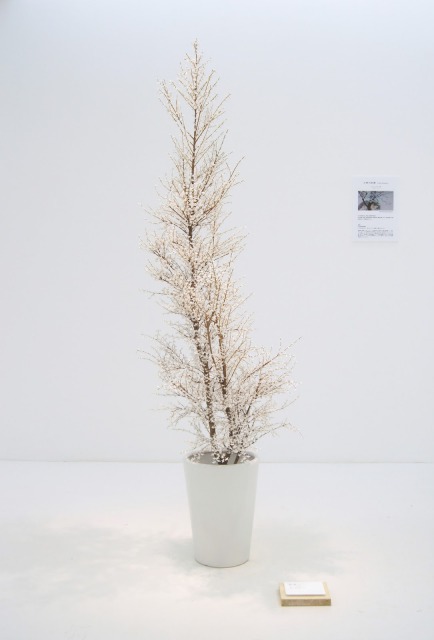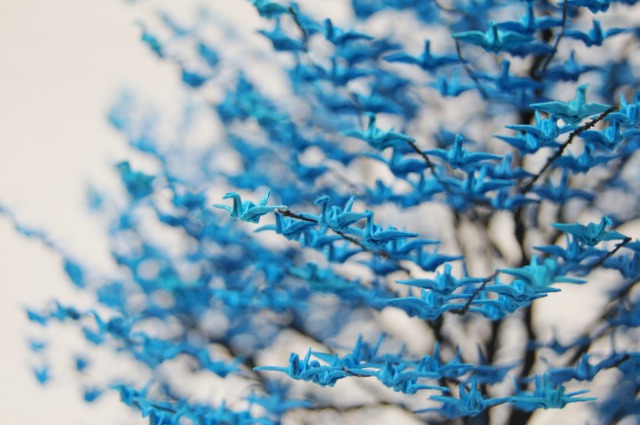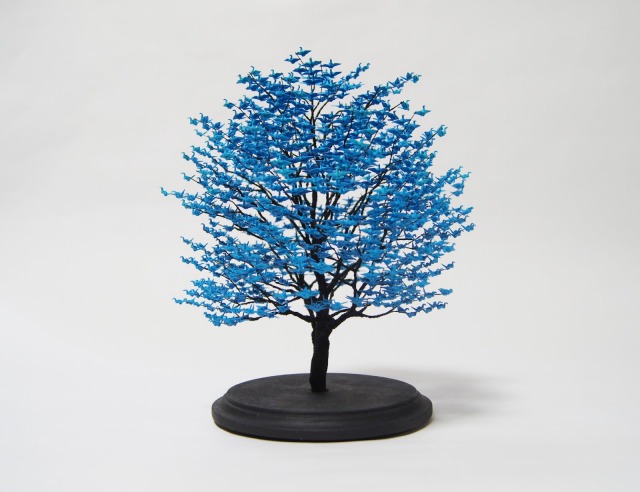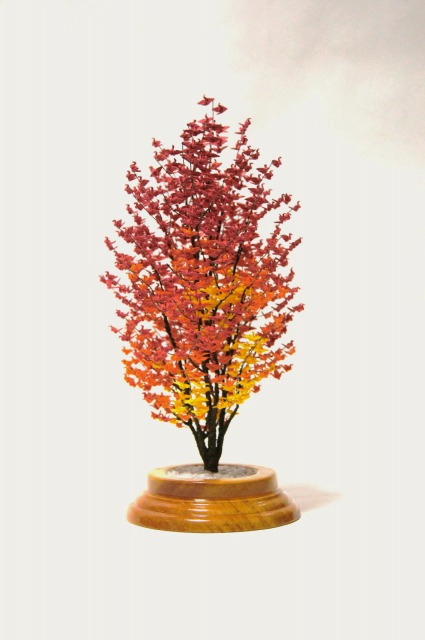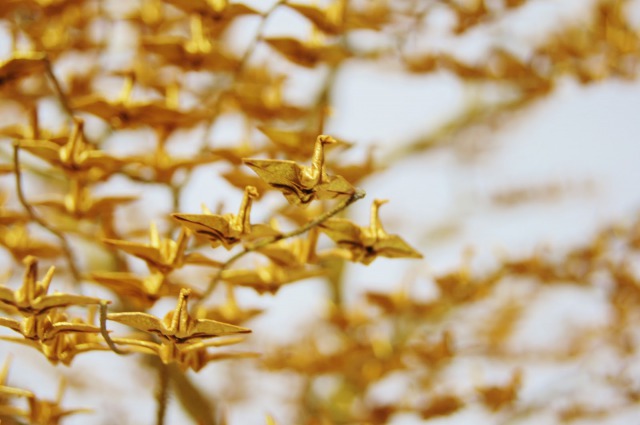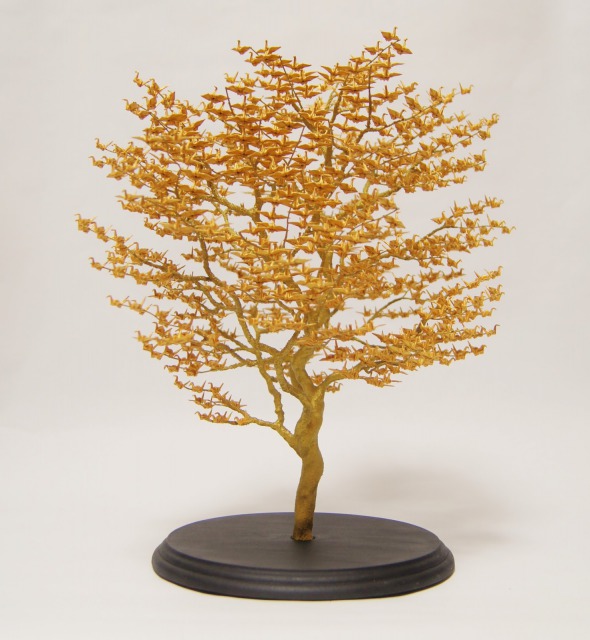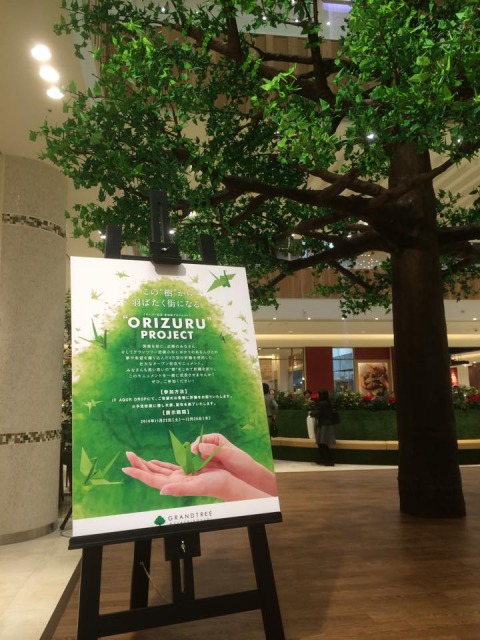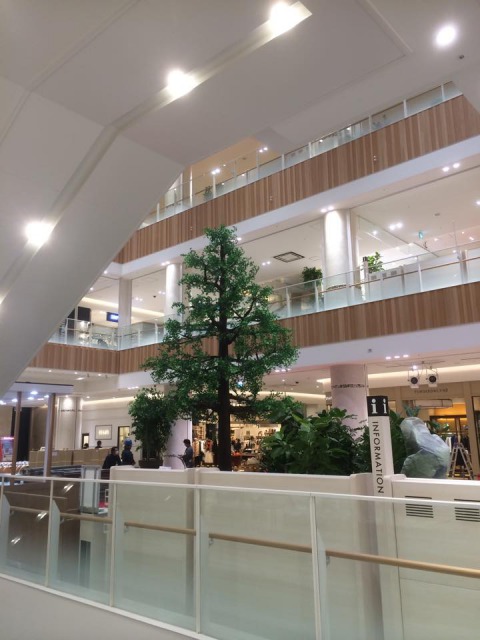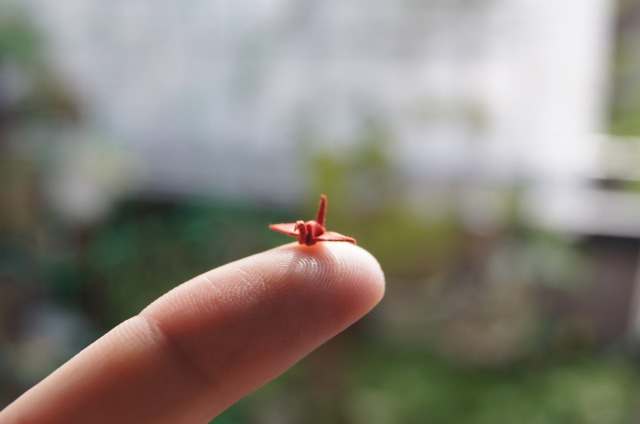
Naoki Onogawa's Folded Crane Art: A Surprising Minuscule World
Origami is a Japanese traditional play, in which various techniques are used to fold one paper into various shapes. We present you artworks created using Japanese origami this time.
This post may contain affiliate links. If you buy through them, we may earn a commission at no additional cost to you.
Have you ever tried origami?
Have you ever tried origami before?
Origami is a traditional Japanese craft where you fold a single sheet of paper into different shapes such as flowers, animals, or any other geometric figure that you can think of.
Lately you can find lots of paper with modern patterns, and it's become an important item for crafty people.
You can buy cute origami paper at the 100 yen store
The origami paper in the picture is sold in the 100 yen shop and it seems like there are 80 sheets in one package. It would be an excellent souvenir.
※If you want to get the specific package that is featured here, please inquire at your nearest 100 yen shop yourself as patterns and amounts may vary.
By the way, in Japan there is a gift culture where one creates a "senbazuru," or a string of 1000 cranes.
Japanese people will create these zenbatsuzuru for specific people or groups during special times.
What is a senbazuru?
Thousand Origami Cranes (千羽鶴 Senbazuru) is a group of one thousandorigami paper cranes (折鶴 orizuru) held together by strings. An ancient Japanese legend promises that anyone who folds a thousand origami cranes will be granted awish by a crane. Some stories believe you are granted eternal good luck, instead of just one wish, such as long life or recovery from illness or injury. This makes them popular gifts for special friends and family.
Even though it seems difficult to fold just one crane, it's hard to imagine the amount of time it takes to fold 1000. There are websites that sell senbazuru for people who don't have the time to fold 1000 cranes.
The senbazuru garbage problem
While senbazuru take so much time and money, it seems that they rank high on the "things I don't need" list by people who have received them. For example, after the terrible earthquake and tsunami disaster on March 11th, 2011, a huge amount of senbazuru were sent to the affected areas but it was such an exaggerated amount that most of them were incinerated.
The differing opinions and feelings of people vs the truth
Japanese people generally send senbazuru to people who are in pain or having a lot of trouble in order to give them courage. In spite of that, a certain Japanese artist developed a work of art in order to reveal the feelings that developed in the differing opinions of those who send the senbazuru and those who receive them.
"Tsuru no Ki" ("The Tree of Cranes"): Sending people's wishes once time has passed
This is that artwork. When you look at it from afar, it looks like a regular piece of a blooming tree but if you look closely...
You'll be surprised by the 10,000 cranes!
Can you see it? Actually these little white shapes aren't flowers, but they're all cranes folded by the artist.
naokionogawa.blogspot.jpThe artist uses origami cranes in other pieces as well.
First is this 15mm x15mm crane.
The little red figure in the photo is the crane.
It's so small...
It's so small it makes you doubt your eyes. Why did the artist fold this crane?
He folded them for the small piece "Origami Crane in a Jar"
This origami crane flies forever with people's thoughts and feelings.
Table decoration size - Tsuru no Ki
Abyssal
naokionogawa.blogspot.jpThis blue tree of cranes holds a wondrous atmosphere.
naokionogawa.blogspot.jpThe color of the cranes have slight differences in shades leading to a fantastic gradation throughout the tree.
The tree itself being black gives this tree a more modern feeling.
"Kibou no Honoo" ("The Flames of Wishes")
naokionogawa.blogspot.jpnaokionogawa.blogspot.jp
naokionogawa.blogspot.jp
This piece looks exactly like flame-like foliage.
This piece also delivers the characteristic uplifting feeling of Japanese autumn.
Just as though they were calling the impressive vividness, the cranes in this piece are flying straighter and higher than in other pieces.
Gold
This tree of cranes is a beautiful, auspicious-looking piece.
Both the tree and the cranes are all gold.
naokionogawa.blogspot.jpnaokionogawa.blogspot.jp
These cranes elegantly dance in the sky.
Forever together: origami crane earrings
These origami cranes are, of course, handmade.
It seems like there are different versions. Isn't it great that this traditional Japanese art was used to create easily-accessible fashion pieces like this?
Why does artist Naoki Onagawa create artwork like this?
This is the artist, Naoki Onogawa. Why does he create art this way?
One of the characteristics of Japanese people is the ability to keep things without any shape in their souls.The origami cranes that I met as a child is one of them.Those cranes are filled with the different prayers of different people.The souls and existences of those Japanese people are piled into the cranes and I use them to create art.
A wide audience
This shopping mall opened in November 2014. Onogawa was in charge of creating the large crane of trees that stands in the entrance of the mall.
#アーホ で紹介された折り鶴で出来たツリーだよ! (@ GRAND TREE MUSASHIKOSUGI (グランツリー武蔵小杉) - @gtmusashikosugi) https://t.co/tGgxcaaj8R pic.twitter.com/dRI21d4CL4
— keigo ishii (@keigo_ishii) 2015, 1月 7
This 20 meter tall tree took 40,000 cranes.
What's his next work?
Onogawa has said he's going to make a charming piece using these tiny cranes.
Naoki Onagawa's words
naokionogawa.blogspot.jp"The origami crane is one of the most familiar pieces of origami and it's now famous all around the world.
However, when I met the cranes as a child, it was nothing but play.
So I place the so-far-unseen emotions and surprise on the origami cranes,
and I pray that they will fly the wishes from Japan to the world.
Blog (Gallery)
Facebook (Japanese Only)
Twitter(Japanese Only)
The information in this article is accurate at the time of publication.









